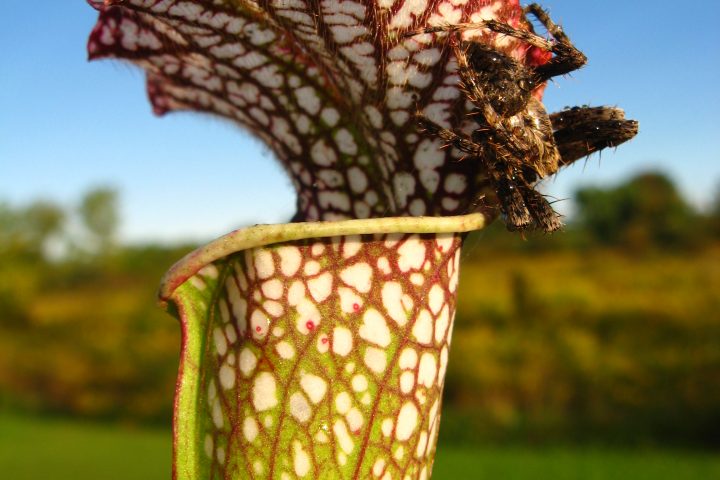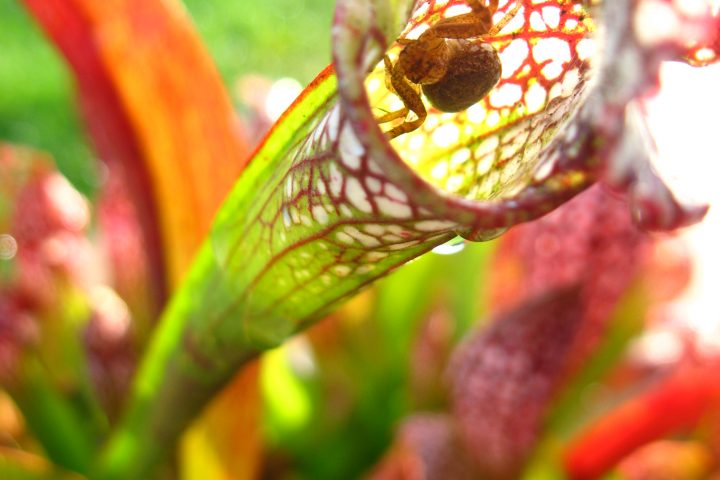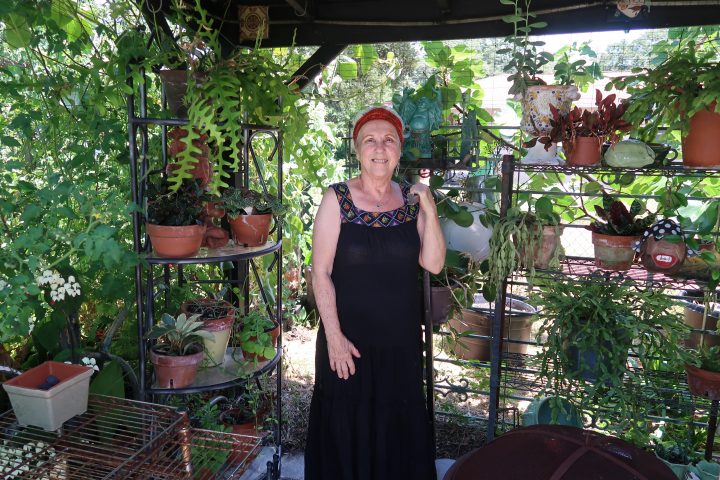Josh Caraballo has had a passion for the environment, animals, and plants his entire life. Recently he has become a philodendron fanatic. At dinner, on more than one occasion, he has had to check his phone multiple times to see if he has won online auctions regarding rare philodendrons. In addition to Amazon, eBay, and online plant nurseries, Caraballo uses Instagram to network with like-minded individuals to add to his collection.
“I got more serious about plants and propagating them about 2 years ago as a hobby,” Caraballo says. “I chose philodendrons because I love the massive variety; all of the colors and the way they grow. Climbing philodendrons are my favorite.”
Philodendron is Greek for “tree-loving”. When I first learned about Caraballo’s adoration for philodendrons I was surprised. I pictured the most common trailing houseplant, Philodendron cordatum, with its heart shaped leaves and was curious why anyone would be interested in this genus. I thought, erroneously, that they were nothing more than a glorified pothos.
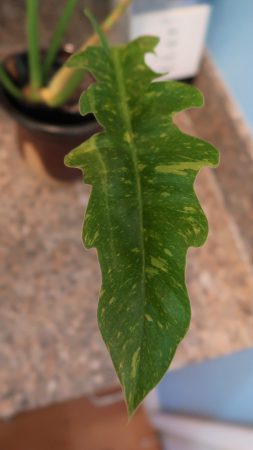
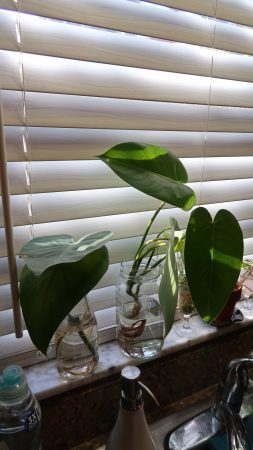
Caraballo has about 130 species of plants at his Tampa home, including his landscape plants, with a few dozen philodendron species and cultivars.
His rarest variety is Philodendron ‘White Wizard’ which has large round leaves with sizeable splashes and spots of white. Each plant and leaf are different. Hobbyists love it when a leaf is split half green and half white. ‘White Wizard’ is easy to grow but develops slowly. When available, small 4” pots sell for $80!
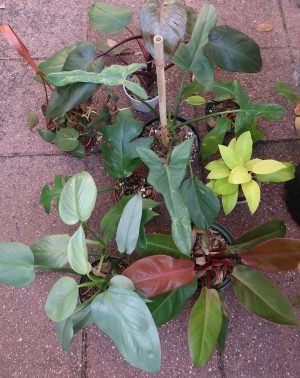
Philodendrons, a member of the aroid family, can be grown as houseplants, or outdoors most of the year throughout Florida. And most of them aren’t expensive. Philodendrons do best in moist, nutrient rich soil. Philodendrons can be categorized in two groups; climbers and self-heading or non-climbing. Climbers grow best alongside trees or poles wrapped in moss or burlap. Caraballo makes his stakes small enough for him to move his plants to protect them from a freeze.
Climbing plants look great in decorative pots or hanging baskets. Planting them next to trees or arbors and allowing them to climb will create large leafed plants who often are unrecognizable from their immature state. Philodendrons can make your Florida backyard look tropical quickly. Caraballo’s ‘Jose Buono’ can grow 10 feet high in a season and produce a 1-inch thick stem. If kept indoors ‘Jose Buono’ grows much slower and will only need to be pruned back once a year.
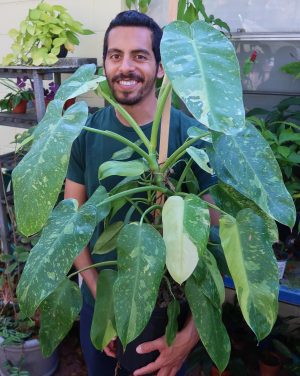
If philodendrons are grown in containers provide a wide container to allow the roots space. The more space they have the fuller and taller the plants will become. Rootbound plants will grow slowly.
If you choose to supplement your plants, do so sparingly, by using a 15-5-10 slow time release fertilizer. Fertilizing three times a year is enough. Most philodendrons grow best outdoors in Zones 9-11.
When asked what his favorite variety in his collection was, Caraballo had to take a minute to think.
“That is a tough question. I have a few favorites for different reasons. The ‘White Wizard’ will be a show stopper when it grows a bit more and matures. I love my ‘Golden Dragon’ because of the shape of the leaves, they look like a dragon’s head! My most impressive in size, though very common is my Philodendron ‘Jose Buono’. I love how every new leaf looks completely different in color and pattern; the variegation in the leaves also starts out white then changes to cream to light green over time.”
Collect Your Own Medieval Empire
Try these themed cultivars:
- Black Knight
- Golden Dragon
- Pink Princess
- Prince of Orange
- White Knight
- White Wizard
Do you have a favorite philodendron cultivar? If so, shoot me a message on Facebook or find Josh at caraballo_joshua on IG.
| Josh’s Philodendron Profiles | ||
| ‘Jose Buono’ | Climbing | Variegation in the leaves start out white and change cream to light green over time. Capable of growing 10 feet in a season.
|
| ‘Orange Marmalade’ | Climbing | Orange mottled leaves blend into green. |
| ‘Pink Princess’ | Climbing | Leaves are uniquely splashed, spotted, and streaked with pink as they mature. |
| ‘Prince of Orange’ | Non-climbing | Shrub like tropical plant grows copper-orange leaves and can grow over 2 feet tall |
| ‘Ring of Fire’ | Climbing | A slow grower for the serious collector. Leaves range from pink, red, orange and green. |
| ‘Splash Gordon | Climbing | Elongated shaped leaves that have dappled silver-green leaves which darken over time. |
| P. distantilobum | Climbing | Beautiful finger shaped leaves. Does best outdoors where it can climb. |
| P. gloriosum | Non-climbing | Velvet heart shape leaves make a great addition to a tropical landscape. |
| P. hastatum | Climbing | Elongated grey/blue leaves are semi-glossy. |
| P. micans | Climbing | Available at big box stores, leaves are uniformed and does well in small spaces. |
| P. pedatum ‘Florida Beauty’ | Climbing | Narrow finger shaped leaves grow various variegated patterns. |
| P. squamiferum | Climbing | Lobed leaves are supported by hairy red stems! |
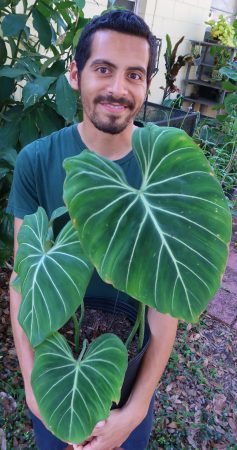

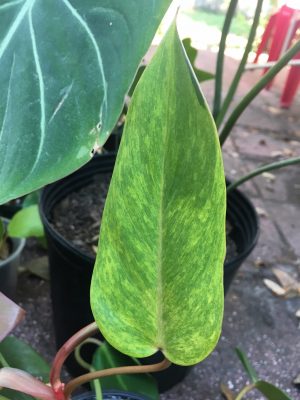
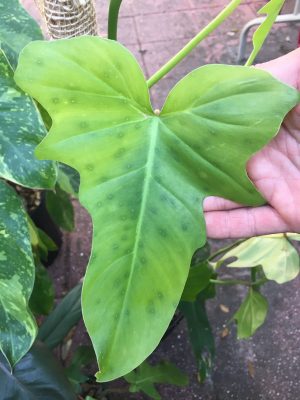
Josh’s Tips for Philodendron Success
-
- Give them bright indirect sunlight, they’ll love it.
- Research desired soil types. Most climbing Philodendrons like mulch and bark in the potting mix since they would be climbing up trees naturally.
- Philodendrons are found in the tropics, so provide high humidity and warm temperatures.
- Most are easily propagated in water, which allows you to make more of the plants you enjoy for yourself and friends.
- Don’t be discouraged if you fail. You learn what works and what doesn’t by trial and error.

